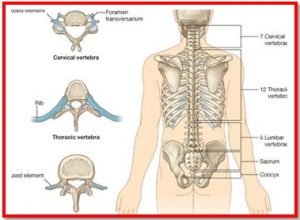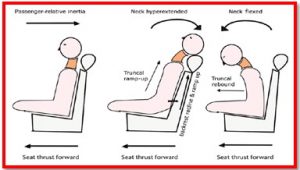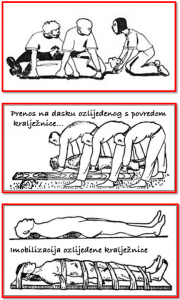SPINE INJURIES
SPINE INJURIES
The spine is the main axis of the body to which all the bones of the body are directly or indirectly connected, and it is also the protective armor of the spinal cord. The spinal cord is made up of bundles of nerve fibers, which are built of ascending and descending nerve pathways. These nerve pathways connect the brain to all parts of the body. In addition, the spinal cord is the seat of the reflex, as well as some centers.
Spinal trauma can damage the bone, ligaments, joints, spinal cord and its roots. All of these injuries can lead to permanent neurological deficits if spinal cord damage occurs. Spinal trauma most often occurs during traffic accidents, according to the data, as many as 40% of these injuries occur in this way. The rest is attributed to falls from a height, certain sports activities, injuries at work, injuries from other people, etc.

Given the pathology of spinal cord injuries, we divide into the following:
⦁ subluxation of the vertebrae - displacement of the lower vertebrae relative to the lower and is most often associated with rupture of the ligaments of the spine,
⦁ compression vertebral fracture- where ligament damage does not occur,
Kral vertebral fracture-vertebral fracture with simultaneous luxation of fractured fragments.
The spine is divided into the cervical, thoracic, lumbar, buttocks and buttocks.
Since most of these injuries occur in traffic accidents, the mechanism of these injuries will be explained, as well as the first aid treatment of these victims.
In traffic accidents, the part of the spine most often suffers at the transition from the neck to the chest, but also the lumbar part of the spine due to the sitting position of the patient. These injuries occur during acceleration (hyperextension) and deceleration (hyperflexion) forces.

Such patients need:
⦁ approach with great caution, especially if it is a large accident, where the circumstances and the picture of the accident speak of the force of the impact.
⦁ The very suspicion of any spinal injury requires a procedure as if it were the most severe form of spinal injury.
⦁ The injured person must not be removed or transported without the immobilizer prepared.
⦁ Proper treatment of these patients prevents secondary spinal cord injuries.
⦁ Proper transport of these patients to the hospital is also important.
⦁ The release of the injured person and his or her evacuation from the scene of the accident, provision of respiration, immobilization, and appropriate transport to the hospital significantly determine whether the incident will result in recovery and healing, permanent disability or death of the injured person.
⦁ Such patients in whom we suspect a spinal injury are always pulled out of the car, ie. from the scene of the accident, at least three rescuers, in order to perform as little manipulation and movement as possible.
If we find a patient in a supine position, for example a patient who flew out of the windshield in a strong collision, immobilization of such a patient requires a spatula stretcher or a vacuum mattress in addition to the collar.
If we do not have these means of immobilization, we use handy means, e.g. planks wider and longer than the patient or room door.

